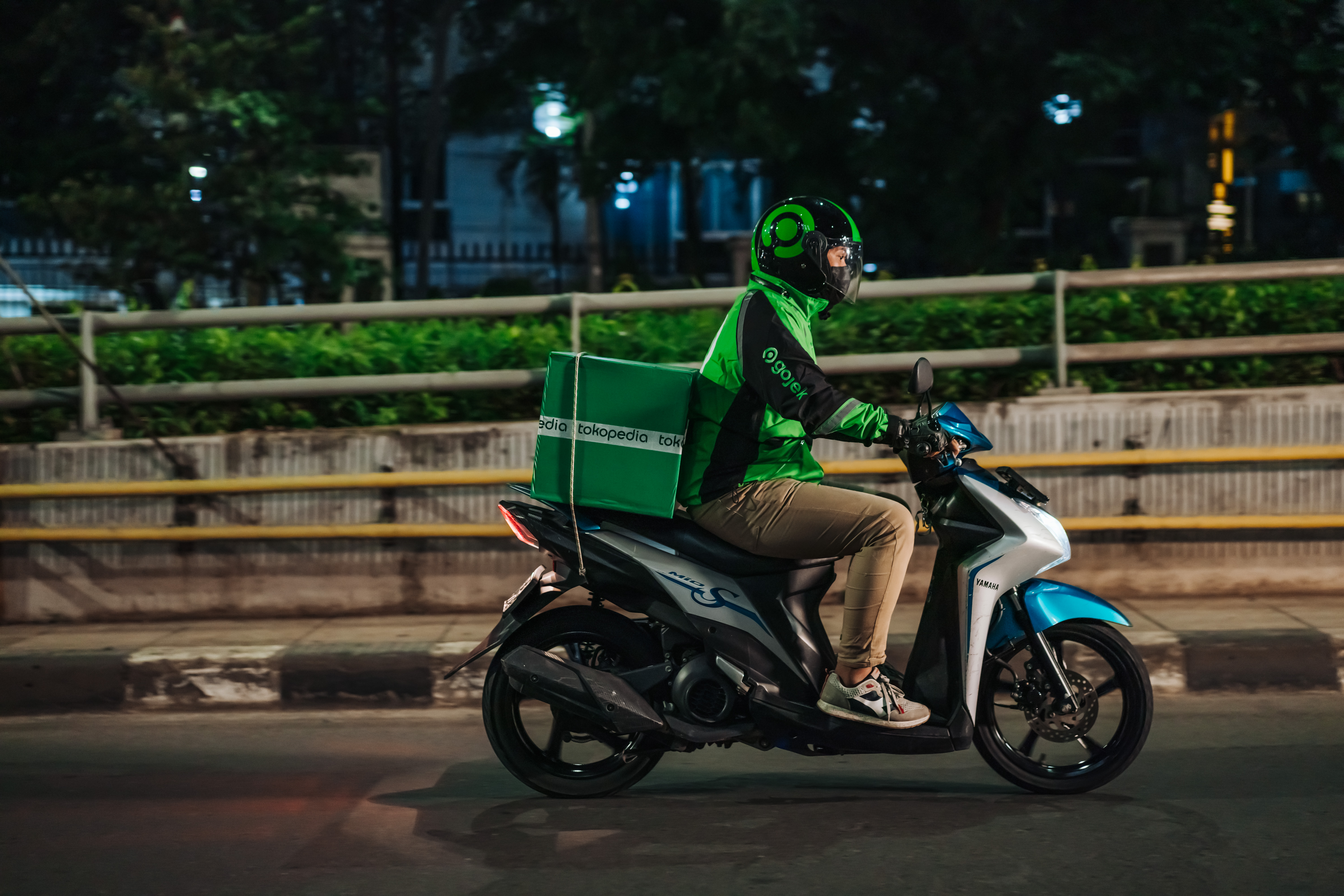Southeast Asian ride-hailing and food delivery services are racing toward eco-friendly mobility, aiming to deploy more electric and low emission vehicles as governments and investors push for greener economies.
Singapore’s Grab recently pledged to transition to low emission vehicles to achieve carbon neutrality by 2040. The initial step is to replace its ride-hailing fleet in the city-state with such vehicles by 2030.
Grab’s move follows its biggest rival, GoTo, the company formed through a merger of Indonesia’s Gojek and local e-commerce platform Tokopedia. Gojek was one of the first startups in the region to publicly state its goals for environmental sustainability. In April last year, it vowed to make its entire fleet electric by 2030.
GoTo is “on track to reach its goal of zero emissions,” the company said on Friday in an update of its environmental, social, and governance goals. The company added that the conversion of its entire fleet to EVs by 2030 is making “tangible progress” through pilot programs with local energy company TBS Energi Utama, and collaborations with partners like Taiwanese electric scooter makers Gogoro and Mitsubishi Motors.
The efforts come as governments set timelines to abandon vehicles running on fossil fuels. Singapore plans to phase out internal combustion vehicles by 2040. In Indonesia, only electric motorcycles will be sold from 2040, while all new cars will be EVs from 2050.
Still, experts question the efficacy of the measures and benefits to consumers, given the high cost of EVs and the largely undeveloped charging infrastructure in most Asian cities.
“Full EV conversion is something that could make sense in cities with an aggressive ramp-up of EV charging infrastructure, like Singapore, and tax incentives for EV adoption,” said Walter Theseira, associate professor of economics at Singapore University of Social Sciences (SUSS). “It may not make sense elsewhere yet.”
Theseira added that it is unclear what the shift would entail. “While operating costs will likely fall due to the higher efficiency of EVs and the current high oil prices, we also have to consider that in some markets, fuel is subsidized, and it remains unclear whether [operators] who push electrification will have to build out their own charging network.”
Operating in eight Southeast Asian countries with around 2.8 million drivers, 96% of Grab’s carbon emissions last year came from vehicles owned by independent drivers.
“A core part of Grab’s strategy is to help build an inclusive EV ecosystem that caters to the middle and middle-lower class,” the company said in its latest environmental, social, and governance report released in May.
Grab already operates an EV ride-hailing fleet in Indonesia comprised of around 8,500 vehicles, with plans to increase this to 26,000 by 2025. It has partnered with Hyundai Motor Group to launch programs in Singapore, Indonesia, and Vietnam to encourage drivers to adopt EVs.
In Thailand, the company recently partnered with Kasikornbank’s leasing subsidiary in a loan program that allows drivers to purchase EVs at a discount. Grab hopes to have 10% of its drivers use EVs by 2026.
Ride-hailing and delivery services are booming in Southeast Asia. The combined market for the services totaled around USD 13 billion in 2021 and is expected to reach USD 42 billion in 2025, according to Statista. As the sector grows, many investors want to see companies raise the bar regarding environmental and social performance and corporate governance.
Grab and Gojek have touted their achievements in the social and corporate governance spheres, but their environmental efforts are being closely watched by investors, especially now that the two have gone public.
They face a tough challenge, as their businesses are built around gasoline-powered vehicles. Transitioning to more eco-friendly vehicles could stall efforts to meet current and future demand. In Indonesia, for example, traditional motorcycles still rule the streets. In 2020, there were 136 million vehicles in the country, roughly 85% of which were motorcycles, according to Singapore-based banking and financial company DBS.
Outside Southeast Asia, Chinese and American ride-hailing players are moving ahead with their transition plans. In China, EV makers like BYD already supply custom-built EV fleets to Didi Chuxing on the back of strong government support. Uber and Lyft have announced that all vehicles on their platforms will be electric by 2030, as their home state of California plans to ban sales of new gasoline cars by 2035.
The recent rise in global oil prices could help fuel Grab and Gojek’s shift to cleaner mobility. Grab CEO Anthony Tan noted that the effects of higher fuel prices have resulted in “slight [fee] increases” in Singapore and Vietnam, though the company has “yet to see a material impact in mobility demand.”
Singapore’s largest taxi operator ComfortDelGro—which has been testing its own ride-hailing service—hiked fares in March for the first time in a decade, citing a 10% rise in fuel costs.
The operator of about 10,000 taxis will roll out 400 fully electric cabs this year and, by next year, have up to 1,000 electric vehicles and another 7,000 hybrid units.
In the short term, however, the benefits to users could be limited, with higher fares or less availability during peak hours. Theseira of SUSS stressed that stakeholders must figure out how to quickly charge large EV fleets when demand surges.
“There’s no economic or planning problem with having a small demonstration of EV [fleets],” the urban transportation expert said. “When you get serious numbers, though, if you haven’t thought about the charging infrastructure, then you will have problems.”
This article first appeared on Nikkei Asia. It has been republished here as part of 36Kr’s ongoing partnership with Nikkei.
